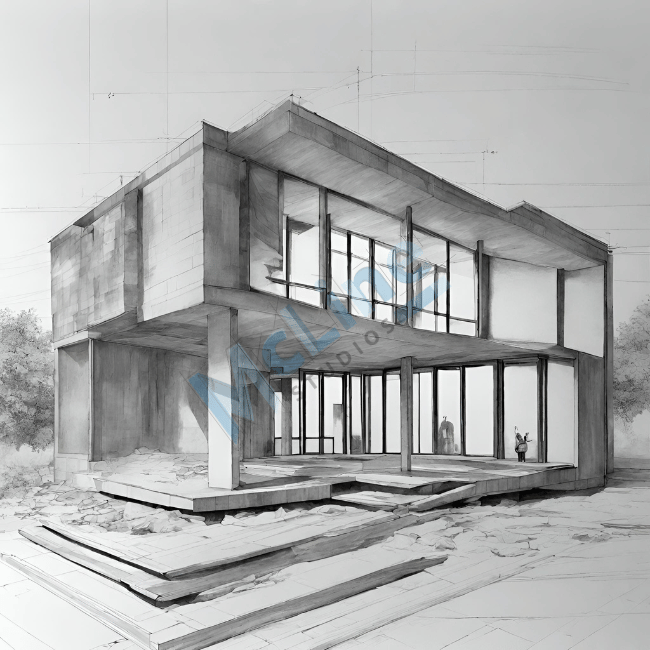In today’s rapidly evolving construction industry, efficiency, accuracy, and collaboration are paramount to success. Traditional methods of construction planning and execution often lead to inefficiencies, errors, and delays, resulting in increased costs and compromised project quality. However, with the advent of Building Information Modeling (BIM), these challenges are being overcome, revolutionizing the way construction projects are designed, planned, and executed. In this blog, we’ll delve into the myriad benefits of implementing BIM in construction projects and explore how it can streamline processes, improve collaboration, and deliver superior outcomes.

What is BIM in Construction?
Building Information Modeling (BIM) is a sophisticated digital technology that enables the creation and management of comprehensive 3D models containing rich data about a building or infrastructure project. Unlike traditional 2D drawings, BIM models incorporate detailed information about every aspect of the project. Which includes architectural, structural, mechanical, and electrical components. This information is not only visual but also semantic, enabling stakeholders to extract valuable insights and make informed decisions throughout the project lifecycle.
Benefits of Implementing BIM (Building Information Modeling)
1. Enhanced Collaboration and Communication With BIM:
One of the most significant advantages of BIM is its ability to facilitate seamless collaboration among various project stakeholders, including architects, engineers, contractors, and clients. By working on a shared digital platform, team members can collaborate in real time, exchange information, and resolve conflicts more efficiently. This enhanced communication leads to better coordination, reduced errors, and ultimately, improved project outcomes.
2. Improved Visualization and Design Analysis:
BIM enables stakeholders to visualize the project in a highly realistic 3D environment, allowing for better design analysis and decision-making. Design iterations can be easily explored and evaluated, enabling architects and engineers to optimize building performance, energy efficiency, and sustainability. Additionally, BIM facilitates clash detection, enabling early identification and resolution of conflicts between different building systems, thereby minimizing costly rework during construction.
3. Enhanced Cost and Schedule Management With BIM:
BIM’s data-rich models enable more accurate cost estimation and scheduling, leading to better project planning and control. By integrating cost and schedule information directly into the BIM model. Project managers can track progress, identify potential delays, and mitigate risks more effectively. This proactive approach to project management helps minimize cost overruns and schedule delays. Ensuring projects are delivered on time and within budget.
4. Streamlined Construction Documentation With BIM:
Traditionally, creating and managing construction documentation is a labor-intensive and error-prone process. With BIM, however, this task is significantly streamlined. BIM models serve as a central repository for all project-related information, including drawings, specifications, and schedules. This centralized approach ensures that all stakeholders have access to the latest, most accurate information, reducing confusion and minimizing errors during construction.
5. Enhanced Facility Management:
BIM’s benefits extend beyond the construction phase to the operational life of the building. By incorporating detailed asset information into the Building information model, facility managers can efficiently manage. They also maintain building systems, optimize energy usage, and plan for future renovations or upgrades. This seamless transition from construction to operations ensures that buildings are not only delivered efficiently. But also perform optimally throughout their lifecycle.
Conclusion
In conclusion, the benefits of implementing BIM in construction projects are clear. Enhanced collaboration, improved visualization, better cost and schedule management, streamlined documentation, and enhanced facility management. Embracing this transformative technology is essential for staying competitive in today’s construction industry and delivering projects of the highest quality and efficiency.
At McLine Studios, we understand the importance of leveraging cutting-edge technologies like BIM to drive innovation and excellence in construction projects. With our expertise in BIM services. We help clients unlock the full potential of this powerful technology, from initial design to facility management. Contact us today to learn more about how we can support your next construction project and deliver superior results with Building Information Modeling.
In a landscape where construction projects are becoming increasingly complex and demanding, embracing BIM is not just a choice but a necessity. It’s time to elevate your construction processes and unlock new levels of efficiency and success with Building Information Modeling.


